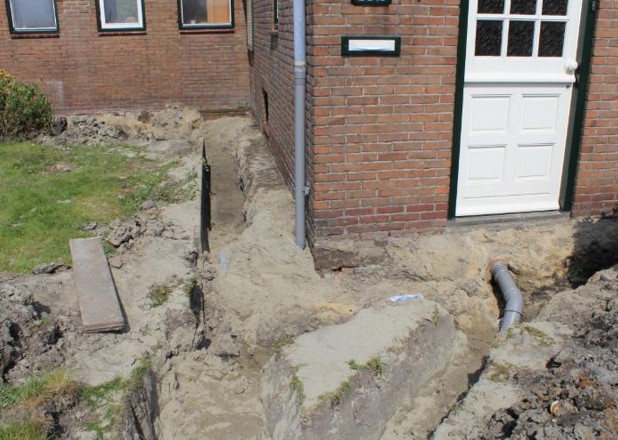When to Walk Away: Key Indicators for Deciding on Basement Foundation Repair

Dealing with basement foundation problems can be a daunting experience. Foundation issues aren’t just a minor inconvenience—they can compromise the safety, stability, and value of your home. Whether you’re facing cracks in the walls, leaks, or structural shifts, knowing when to repair and when to walk away is key.
This guide will help you navigate the decision-making process and determine whether basement foundation repair is worth pursuing or if it might be best to consider other options.
Assessing the Extent of Damage
The first step in deciding whether to proceed with basement foundation repair is to assess the extent of the damage. Begin by conducting a visual inspection of your foundation. Look for cracks in the walls, floors, ceilings, and any signs of water leakage. Pay close attention to the size and pattern of these cracks—small, hairline cracks may be minor, but large, horizontal, or stair-step cracks could indicate more serious issues.
It’s essential to understand that not all foundation problems are created equal. Straightforward repairs might make minor cracks manageable, while more severe issues could require significant intervention. If you’re unsure about the severity of the damage, it’s wise to consult a professional. A foundation expert can perform a thorough evaluation and provide insights into the extent of the repairs needed and whether they are feasible.
Understanding the Cost Implications
Cost is a major factor in the decision to repair or walk away from basement foundation issues. Foundation repairs can be expensive, with costs varying based on the repair type needed and the damage’s extent. It’s crucial to weigh the cost of repairs against the value of your home. Sometimes, the financial investment required for extensive repairs can outweigh the benefits, especially if the property’s value doesn’t justify the expense.
Obtain multiple quotes from different contractors to get a clearer picture of the potential costs. This will help you compare prices and understand the financial implications of the repairs. Consider your budget and whether you can afford the necessary repairs without causing undue strain. If the cost of repair is too high, it might be worth exploring other options.
Evaluating Long-Term Risks
Beyond the immediate costs, it’s essential to consider the long-term risks associated with foundation repairs. Even after extensive repairs, recurring issues can occur if the underlying problems aren’t fully addressed. This uncertainty can make it challenging to assess whether the investment in repair will provide lasting results.
Additionally, persistent foundation issues can impact the resale value of your home. Potential buyers might be deterred by the prospect of ongoing foundation problems, making it harder to sell the property in the future. Understanding how foundation issues could affect your home’s market value can help you make a more informed decision.
Insurance considerations also play a role in this evaluation. Some insurance policies may cover foundation repairs, but this can vary. Check with your insurance provider to understand what’s covered and how it might impact your decision.
Considering Alternative Solutions
If the cost of repairs seems prohibitive or the risks too great, you might want to consider alternative solutions. One option is to sell the property as-is. This approach allows you to avoid the financial burden of repairs while potentially attracting buyers who are looking for fixer-uppers or who may negotiate a lower price accordingly.
Another alternative is relocating to a different property. Moving to a new home might be a more practical solution if the foundation issues are severe and costly. This approach avoids the stress and expense of dealing with major repairs and can provide a fresh start in a more stable environment.
If you’re considering temporary fixes, weigh them against long-term solutions. Short-term repairs might address immediate concerns but may not resolve underlying issues, leading to recurring problems. Assess whether temporary solutions are sufficient or if a more permanent approach is necessary.
Key Indicators for Walking Away
Knowing when to walk away from basement foundation repair is crucial. Here are some key indicators that it might be time to consider other options:
- Unmanageable Costs: If the cost of repair exceeds your budget or the value of your home, it may be a sign to walk away. Extensive repairs can be a significant financial burden, and if the expense outweighs the benefits, it might be time to explore other options.
- Severe Structural Issues: Major structural problems that require substantial intervention can indicate that repairs are not feasible. If the damage is too severe or the foundation requires extensive work, it may be better to consider selling or relocating.
- Long-Term Risks and Uncertainty: If there’s a high likelihood of future problems despite repairs, or if the long-term impact on your home’s value is significant, walking away could be a more practical choice. Persistent issues and uncertainty can make repairs less appealing.
Conclusion
Deciding whether to proceed with basement foundation repair or walk away can be complex. You can make a more informed choice by assessing the extent of the damage, understanding the cost implications, evaluating long-term risks, and considering alternative solutions. Remember, it’s essential to consult with professionals and weigh all factors before making your final decision.
If you’re facing basement foundation issues and need expert advice on whether to repair or walk away, contact Total Foundation Repair Kyle. Our team of professionals can help you evaluate your options and provide tailored solutions to address your foundation needs. Don’t wait—reach out to us today for a thorough assessment and personalized recommendations.





